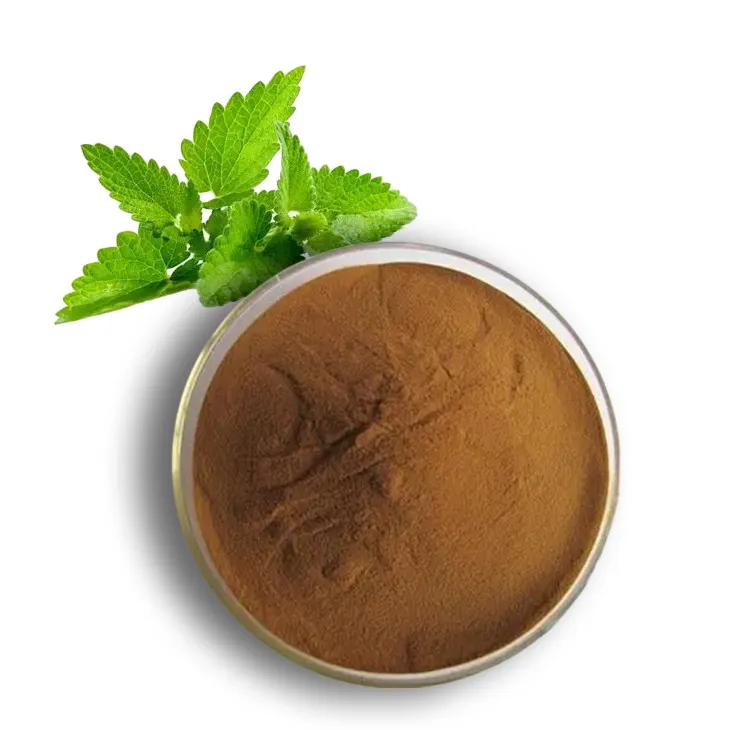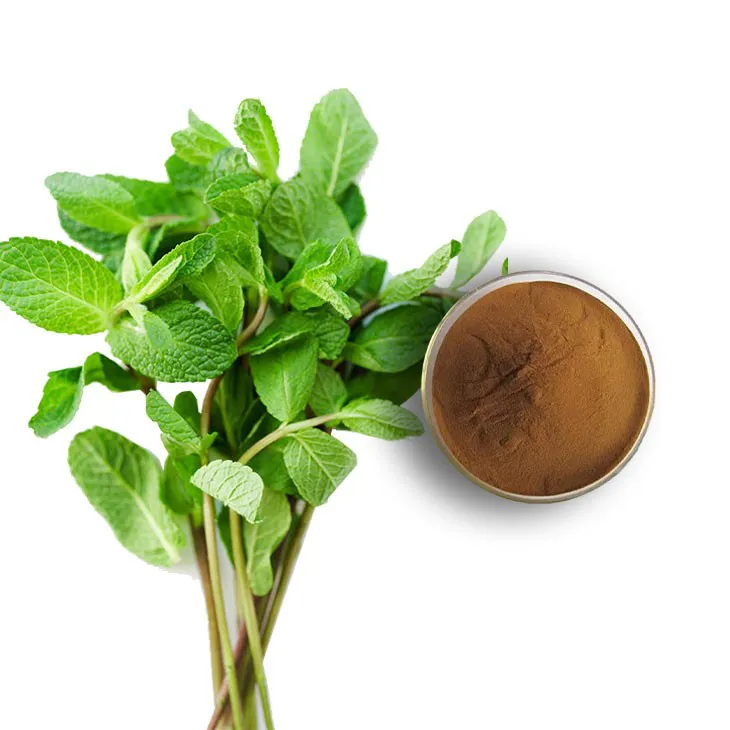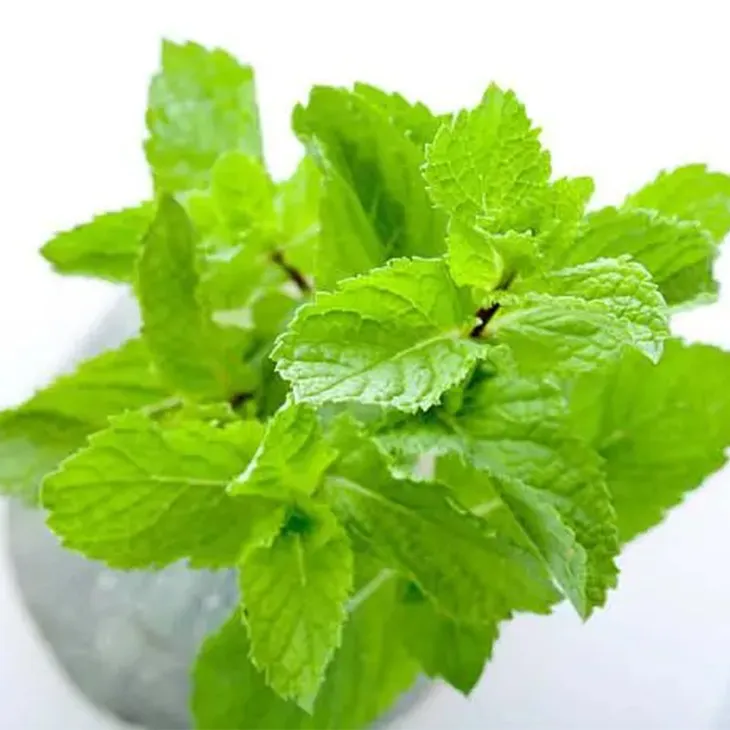- 0086-571-85302990
- sales@greenskybio.com
The process of extracting menthol from peppermint extract powder.
2024-11-28

1. Introduction
Peppermint Extract Powder is a concentrated form of the essence of peppermint. Menthol, a key component within peppermint, has a wide range of applications in various industries such as pharmaceuticals, food, and cosmetics. Extracting menthol from Peppermint Extract Powder is a complex yet interesting process that involves multiple steps and considerations.

2. Significance of Menthol Extraction from Peppermint Extract Powder
2.1 Pharmaceutical Applications
Menthol has well - known medicinal properties. It is often used as a topical analgesic for relieving minor pain, such as headaches and muscle aches. When extracted from peppermint extract powder, it can be purified to a high degree and formulated into various pharmaceutical products. For example, menthol - based ointments and creams are popular over - the - counter medications. The extraction process ensures a consistent supply of high - quality menthol for these medicinal uses.
2.2 Food and Beverage Industry
In the food and beverage industry, menthol provides a characteristic cool and refreshing flavor. It is used in candies, chewing gums, and some beverages. Extracting menthol from peppermint extract powder allows for precise control over the flavor intensity and quality. This is crucial in creating products with a consistent taste profile. For instance, mint - flavored candies need a specific amount of pure menthol to achieve the desired level of coolness on the palate.
2.3 Cosmetics and Personal Care
Menthol is a common ingredient in cosmetics and personal care products like lip balms, skin lotions, and shampoos. It imparts a cooling sensation that is often associated with freshness and relaxation. The extraction from peppermint extract powder enables the production of high - purity menthol, which is essential for formulating products that are both effective and safe for use on the skin and hair.

3. The Extraction Process
3.1 Preparation of Peppermint Extract Powder
Before the extraction of menthol, the peppermint extract powder needs to be properly prepared. This typically involves ensuring that the powder is of high quality and free from contaminants. The powder may be sourced from dried peppermint leaves that have been processed through methods such as steam distillation or solvent extraction to obtain the initial extract, which is then further dried to form the powder.
3.2 Solvent Extraction
- One of the most common methods for extracting menthol from peppermint extract powder is solvent extraction. A suitable solvent, such as ethanol or hexane, is selected.
- The peppermint extract powder is mixed with the solvent in a controlled ratio. This mixture is then stirred or agitated for a specific period, usually several hours. The agitation helps to ensure that the menthol molecules are released from the powder and dissolved into the solvent.
- After the agitation, the mixture is left to stand so that the solid particles can settle at the bottom. This separation process allows for the clear supernatant, which contains the dissolved menthol and solvent, to be decanted or filtered off.
3.3 Distillation
- Following solvent extraction, distillation is often carried out. The menthol - solvent mixture obtained from the previous step is heated in a distillation apparatus.
- Since menthol and the solvent have different boiling points, as the mixture is heated, the solvent will vaporize first. The vapor is then condensed and collected separately, leaving behind a more concentrated menthol solution.
- Depending on the purity requirements, multiple distillation steps may be necessary. Each distillation further purifies the menthol by removing remaining traces of the solvent and other impurities.
3.4 Crystallization
- Once a sufficiently concentrated menthol solution is obtained through distillation, crystallization can be induced. The solution is cooled slowly under controlled conditions.
- As the temperature drops, menthol molecules begin to come together and form crystals. The crystals are then separated from the remaining liquid, which may contain some impurities.
- To further purify the menthol crystals, they can be washed with a small amount of a cold solvent. This helps to remove any surface - adsorbed impurities and results in a higher - purity menthol product.

4. Challenges in Menthol Extraction from Peppermint Extract Powder
4.1 Selecting the Right Solvent
Choosing an appropriate solvent is not always straightforward. Different solvents have different properties, such as solubility, toxicity, and cost. For example, while ethanol is a relatively safe and widely available solvent, it may not be as efficient as some other solvents in extracting menthol from peppermint extract powder. On the other hand, solvents like hexane are more effective but are also more flammable and pose greater safety risks. Therefore, a balance must be struck between extraction efficiency, safety, and cost when selecting the solvent.
4.2 Maintaining Purity
Throughout the extraction process, maintaining the purity of menthol is a significant challenge. There are often other components in peppermint extract powder that can be co - extracted with menthol. These impurities can affect the quality and performance of the final menthol product. During distillation and crystallization, careful control of the process parameters is required to ensure that as many impurities as possible are removed without sacrificing a significant amount of menthol.
4.3 Yield Optimization
The extraction process needs to be optimized to achieve a high yield of menthol. Factors such as the ratio of peppermint extract powder to solvent, the duration of extraction, and the number of distillation steps can all impact the yield. However, increasing the yield sometimes comes at the cost of purity. For example, using a larger amount of solvent may increase the amount of menthol extracted, but it may also lead to more impurities being dissolved. Finding the optimal combination of process variables to maximize yield while maintaining purity is a complex task.
5. Conclusion
The process of extracting menthol from peppermint extract powder is a multi - step and challenging one. However, due to the significance of menthol in various industries, it is a process that is constantly being studied and improved. By understanding the extraction process, the associated significance, and the challenges, it becomes possible to develop more efficient and sustainable methods for menthol extraction in the future.
FAQ:
Question 1: What are the main methods for extracting menthol from peppermint extract powder?
There are several common methods. One is steam distillation. In this process, the peppermint extract powder is heated with steam, and the volatile menthol along with other components is vaporized. Then, through condensation, the vapor is turned back into liquid form, and menthol can be further separated from the mixture. Another method is solvent extraction. A suitable solvent is used to dissolve the menthol from the powder, and then through further purification steps like evaporation and crystallization, menthol is obtained.
Question 2: Why is the extraction of menthol from peppermint extract powder significant?
Menthol has a wide range of applications. In the pharmaceutical industry, it is used for its cooling and analgesic properties. In the food and beverage industry, it provides a characteristic mint flavor. Extracting menthol from peppermint extract powder allows for a concentrated and pure form of menthol to be obtained, which is essential for these various applications. Also, it helps in standardizing the quality of menthol - based products.
Question 3: What are the challenges faced during the extraction of menthol from peppermint extract powder?
One challenge is selectivity. Since peppermint extract powder contains multiple components, it is difficult to selectively extract menthol without co - extracting other substances. Another challenge is the purity of the final product. Ensuring a high - purity menthol requires complex purification steps which can be time - consuming and costly. Also, the extraction process needs to be optimized to avoid degradation of menthol due to high temperatures or inappropriate chemical reactions.
Question 4: How can the purity of menthol extracted from peppermint extract powder be improved?
To improve the purity, multiple purification steps can be combined. After the initial extraction, techniques like fractional distillation can be used to separate menthol from other closely boiling components. Recrystallization from a suitable solvent can also enhance purity. Additionally, advanced chromatographic techniques such as gas chromatography can be employed for final purification to remove trace impurities.
Question 5: Are there any environmental concerns related to the extraction of menthol from peppermint extract powder?
Yes, there can be environmental concerns. If solvent extraction is used, the proper disposal of solvents is crucial to avoid environmental pollution. Also, in steam distillation, the energy consumption can be relatively high, which may contribute to carbon emissions. However, efforts can be made to use more environmentally friendly solvents and energy - efficient distillation systems to mitigate these concerns.
Related literature
- Menthol: Properties, Production and Applications"
- "Peppermint Extract: Composition and Processing for Menthol Extraction"
- "Advanced Techniques in Menthol Isolation from Natural Sources"
- ▶ Hesperidin
- ▶ Citrus Bioflavonoids
- ▶ Plant Extract
- ▶ lycopene
- ▶ Diosmin
- ▶ Grape seed extract
- ▶ Sea buckthorn Juice Powder
- ▶ Fruit Juice Powder
- ▶ Hops Extract
- ▶ Artichoke Extract
- ▶ Mushroom extract
- ▶ Astaxanthin
- ▶ Green Tea Extract
- ▶ Curcumin
- ▶ Horse Chestnut Extract
- ▶ Other Product
- ▶ Boswellia Serrata Extract
- ▶ Resveratrol
- ▶ Marigold Extract
- ▶ Grape Leaf Extract
- ▶ New Product
- ▶ Aminolevulinic acid
- ▶ Cranberry Extract
- ▶ Red Yeast Rice
- ▶ Red Wine Extract
-
Baicalin
2024-11-28
-
Black Rice Extract
2024-11-28
-
melatonin extract
2024-11-28
-
Rose Hip Extract
2024-11-28
-
Green Tea Extract
2024-11-28
-
Artichoke Leaf Extract
2024-11-28
-
Acerola Juice Powder
2024-11-28
-
Senna Leaf Extract
2024-11-28
-
Fig Extract
2024-11-28
-
Milk Thistle Extract
2024-11-28





















